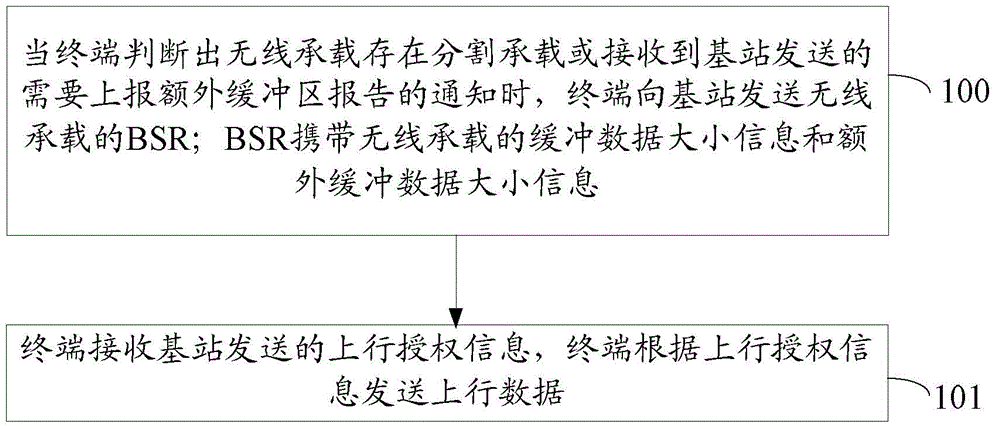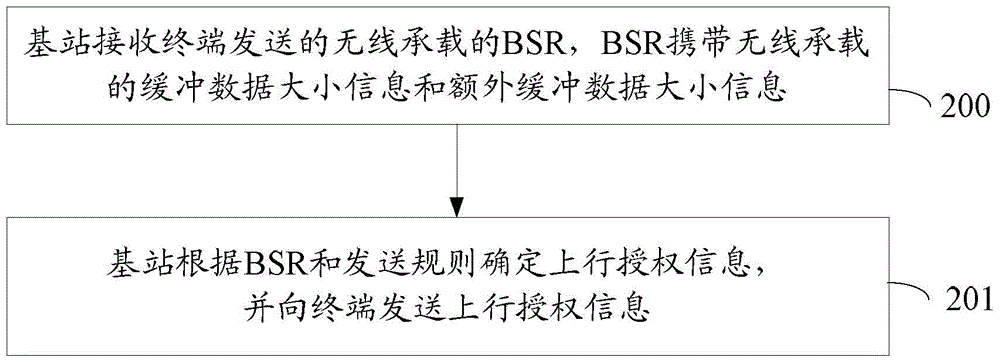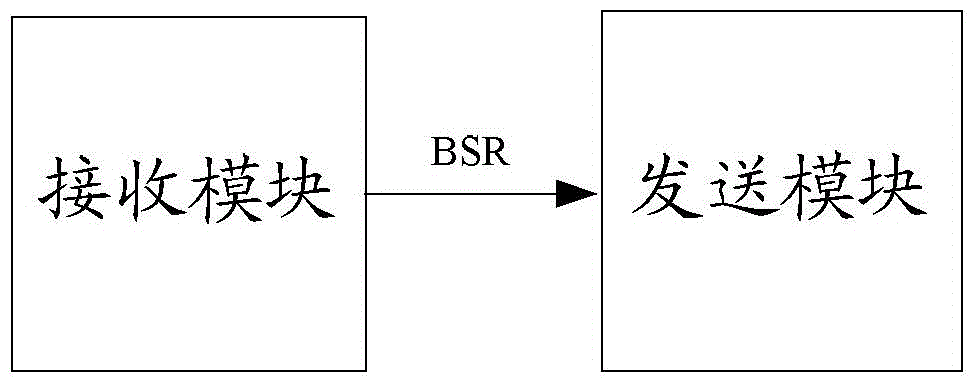Method of reporting and receiving buffer area state and apparatus thereof
A buffer state and buffer technology, which is applied in connection management, wireless communication, network traffic/resource management, etc., can solve the problems of waste of resources and the inability of the base station to accurately know the terminal, etc., and achieve the effect of improved timeliness and simple processing
- Summary
- Abstract
- Description
- Claims
- Application Information
AI Technical Summary
Problems solved by technology
Method used
Image
Examples
Embodiment 1
[0079] The terminal establishes a connection with cell 1. Due to the increase in traffic, base station 1 adds cell 3 to the terminal according to the measurement report, and configures two data radio bearers, namely data radio bearer 1 and data radio bearer 2, both of which belong to LCG0. Data radio bearer 2 is a radio bearer that can be split and sent, that is, it can be sent by base station 1 and base station 2 respectively.
[0080] Behavior of the terminal:
[0081] Step 1. When the terminal needs to send uplink data, calculate the buffered data size of all current LCGs (currently only LCG0) of each base station.
[0082] Because there is only LCG0, the short BSR is used to report, and there are two wireless data bearers on LCG0, so they can be calculated together.
[0083] Step 2. The terminal determines that there is a split bearer according to the configuration information, and therefore needs to report the size information of the additional buffered data.
[0084] T...
Embodiment 2
[0097] The terminal establishes a connection with cell 1. Due to the increase in traffic, base station 1 adds cell 3 to the terminal according to the measurement report. Two data radio bearers are configured, namely data radio bearer 1 and data radio bearer 2. Data radio bearer 1 belongs to LCG0, data radio bearer 2 belongs to LCG1, wherein data radio bearer 2 is a radio bearer that can be split and sent, that is, it can be sent by base station 1 and base station 2 respectively.
[0098] Behavior of the terminal:
[0099] Step 20, when the terminal needs to send uplink data, calculate the buffered data size of all current LCGs (currently LCG0 and LCG1) of each base station.
[0100] Base station 1 has two LCGs, so the long BSR is used for reporting, and base station 2 has one LCG, so the short BSR is used for reporting.
[0101] Step 21, the terminal judges that there is a split bearer according to the configuration information, and therefore needs to report additional BS inf...
Embodiment 3
[0119] The terminal establishes a connection with cell 1. Due to the increase in traffic, base station 1 adds cell 3 to the terminal according to the measurement report, and configures two data radio bearers, namely data radio bearer 1 and data radio bearer 2, both of which belong to LCG0. Data radio bearer 2 is a radio bearer that can be split and sent, that is, it can be sent by base station 1 and base station 2 respectively.
[0120] Behavior of the terminal:
[0121] Step 40, when the terminal needs to send uplink data, calculate the buffered data size of all current LCGs (currently only LCG0) of each base station.
[0122] Because there is only LCG0, the short BSR is used to report, and there are two wireless data bearers on LCG0, so they can be calculated together.
[0123] Step 41, the terminal receives a notification from the base station 1 and learns that it needs to report additional buffered data size information, that is, the buffered data size information of the ...
PUM
 Login to View More
Login to View More Abstract
Description
Claims
Application Information
 Login to View More
Login to View More - R&D
- Intellectual Property
- Life Sciences
- Materials
- Tech Scout
- Unparalleled Data Quality
- Higher Quality Content
- 60% Fewer Hallucinations
Browse by: Latest US Patents, China's latest patents, Technical Efficacy Thesaurus, Application Domain, Technology Topic, Popular Technical Reports.
© 2025 PatSnap. All rights reserved.Legal|Privacy policy|Modern Slavery Act Transparency Statement|Sitemap|About US| Contact US: help@patsnap.com



